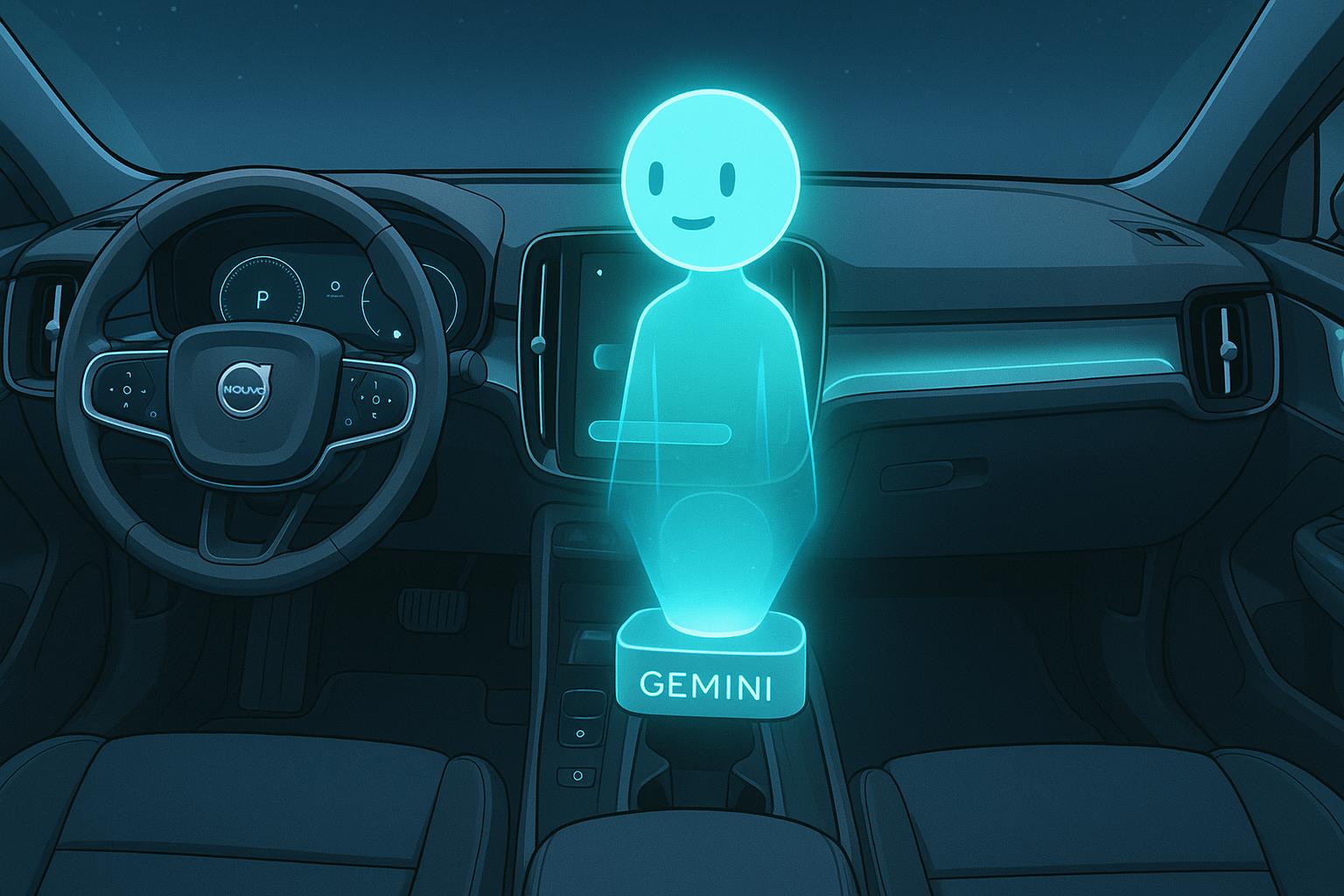Volvo Cars has long been synonymous with innovation, a trait that continues to shine through in its latest collaboration with Google. The Swedish manufacturer, celebrated for its groundbreaking advancements such as the three-point seatbelt and a strong commitment to electrification, is now taking significant strides into the realm of artificial intelligence. The partnership will see Google's cutting-edge conversational AI, Gemini, become the standard voice interface in future Volvo vehicles equipped with Google’s built-in features.
Launched at the Google I/O 2025 event, Gemini promises to revolutionise the driving experience by making interactions within the vehicle feel more natural and engaging. This AI system is designed to alleviate the cognitive load that often accompanies typical in-car systems. For instance, instead of wrestling with menus to find a charging station or navigating through confusing voice prompts, drivers will soon be able to converse with Gemini as they would with a friend. This innovative approach aims to enhance road safety by allowing drivers to maintain their focus on the road while effortlessly accessing information or services—a notable step forward as highlighted by Alwin Bakkenes, Volvo's head of global software engineering, who noted that this partnership is about creating a more seamless driving experience.
With Gemini set to replace the existing Google Assistant in Volvos, drivers can expect a transition from cumbersome command inputs to a fluid, conversational interaction. This shift is not merely cosmetic; it signifies a deeper integration of AI into everyday driving. As Volvo and Google continue to refine this tech, the potential for future updates promises to keep the driving experience fresh and responsive.
Moreover, this collaboration grants Volvo a unique position as a reference hardware platform for Google, allowing it to be at the forefront of Android automotive software development. This means that new features will be trialled in Volvo vehicles before becoming available across other brands using Android Automotive. By being the first to adopt these innovations, Volvo drivers can anticipate early access to enhancements that could redefine in-car technology.
Financially, Volvo is poised for significant growth, having recently reported record sales with a remarkable revenue of SEK 400.2 billion in 2024. This success underscores their strategies not only in innovation but also in sustainability, as the company pivots towards an all-electric lineup, with aspirations for net-zero greenhouse gas emissions by 2040. The Scandinavian carmaker, which operates with a global workforce of 42,600 and manufacturing facilities across Europe, the United States, and China, is clearly on an ambitious trajectory.
The implications of Gemini extend beyond Volvo as Google plans to broaden its integration across various devices, including smartwatches and headphones, by the end of 2025. This strategic expansion is aimed at enriching user experiences across the entire Android ecosystem, according to Google's CEO Sundar Pichai. The versatility of Gemini across multiple platforms signifies a comprehensive embrace of AI in personal technology, enhancing voice interactions not just in cars but in everyday electronics.
As Volvo prepares to unveil Gemini-powered vehicles, the prospects of an automotive world where cars not only assist but also engage with drivers in a more human way seem promising. Will Gemini be able to interject a light-hearted remark about your podcast choices during long drives? As the development continues, it may soon become a reality, showcasing the evolving intersection of technology and daily life. With this partnership, both companies are setting the stage for a smarter, more intuitive future in transportation that could make everyday commutes significantly more enjoyable.
The road ahead for Volvo and Gemini is filled with possibilities, signalling a future where driving is not just about reaching a destination but enjoying the journey itself.
Reference Map
- Paragraph 1: [1], [2]
- Paragraph 2: [1], [2]
- Paragraph 3: [1], [2]
- Paragraph 4: [1], [2]
- Paragraph 5: [1], [2], [4]
- Paragraph 6: [1], [3]
- Paragraph 7: [1], [3], [6]
- Paragraph 8: [1], [6]
- Paragraph 9: [1], [3]
Source: Noah Wire Services
